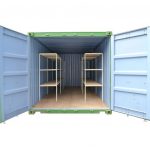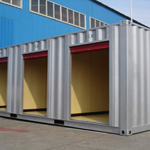Have you ever thought about a world without maritime ISO containers?
Even for someone old enough to have lived in a world with almost no containers, a world without containers is completely unimaginable now.
Maritime ISO containers carry billions of tons of merchandise every year; they make the transportation of goods easier and less expensive.
The importance of shipping containers in numbers
- In 2015, approximately 651 million TEU were moved as container traffic all over the world. Approximately 50% moved across the 20 most important ports in 10 countries.
- The 2015 number represents 70.2% increase in container traffic globally or 52% at the 20 most important ports compared to 2006.
- The total number of containers (TEU) moved in all routes in 2016 is approximately 162 million TEU. In other words, approximately 2.4 billion tons were moved in containers all around the world in 2016. Keep in mind that the same container makes at least two movements – departure and arrival, plus the intermediate storages (transshipments), and transfers at intermediary ports that would count for two more movements.
- There are more than 5,800 container carrier ships in operation around the world.
- The total number of available containers IN SERVICE is estimated to be approximately 38 million TEU.
“Port container traffic measures the flow of containers from land to sea transport modes., and vice versa, in twenty-foot equivalent units (TEUs), a standard-size container. Data refer to coastal shipping as well as international journeys. Transshipment traffic is counted as two lifts at the intermediate port (once to off-load and again as an outbound lift) and includes empty units.” World Bank
Consider the container’s sustainability
- How many available OUT OF SERVICE containers exist in the world?
- What is the lifespan of a maritime container?
- For how long are they used to transport merchandise?
- A house for a 2-3 person family can be made out of 3 TEU, considering that each TEU has approximately 14 sq. m. Six TEU would be enough for a 4-5 person family home.
- There are many sizes and shapes of projects available in the market. Interested persons can also create their own design.
There are approximately 24 million TEU “ex-service” shipping containers across the world.
Created and patented in 1956 by Malcolm McLean, the container, as it is today, has been developed to resist the loads that it will have to carry, the other container loads when it is underneath a pile of them, the corrosion, and all the movement that happens during a trip.
The trapezoidal shape of the metal sheet that composes the walls is sided with good strength steel, also called Corten Steel. This material is one of the key features that makes containers so reliable and long lasting.
A shipping containers is expected to work for its primary purpose for at least 10 years.
After that, the secondary uses of it could be carried on for another 25 years with low or no maintenance at all. Even after many years of use, the maritime ISO containers can still be of some use, even if not for transporting merchandise because of their structural and corrosion resistant characteristics.
After they can no longer be used to transport products, there are many innovative ways to recycle containers.
How to reuse a container after it goes “goes service”
There are many uses and, because of the availability of containers, there are new uses every day.
Considering that there are 24 million “off service” TEU available, there are a 345.6 million square meters of vacant container floors. Seventy million people can be accommodated in makeshift quarters. The containers can also be a sustainable alternative to prevent the destruction of 30 million cubic meters of trees to build houses.
After a maritime container has served as external packaging, transporting all kinds of materials, from boxes to bulk solids, bulk liquids, FIBC’s and IBC’s for 10 years or more, if the container structure is still holding up, then there are many different options to recycle it instead of scrapping it at a junkyard to transform it back into plain metal.
Some containers are used to build houses, schools, workshops, offices, buildings, swimming pools, garages, warehouses, storage boxes, and many other uses that are still in development.
Houses
Apartment buildings
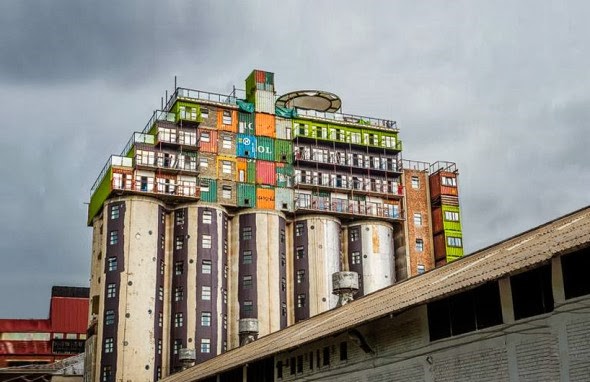 There are apartment buildings made out of containers placed over silos. (Picture from “Esencia y Espacio” Magazine)
There are apartment buildings made out of containers placed over silos. (Picture from “Esencia y Espacio” Magazine)
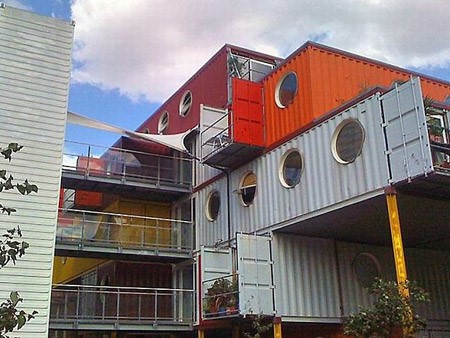 Containers can be interconnected to build multiple apartments / houses. (Picture – Tech Blog)
Containers can be interconnected to build multiple apartments / houses. (Picture – Tech Blog)
Temporary offices
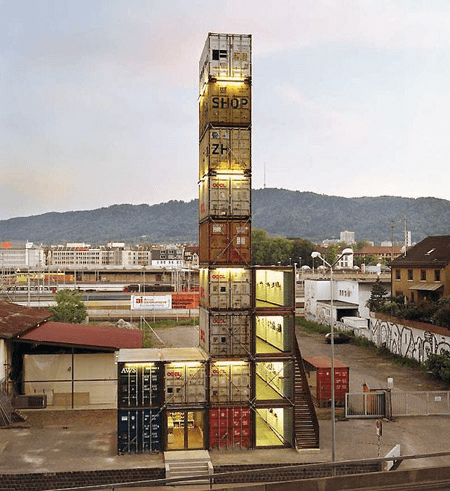 Interlocked containers guarantee structural stability to form multiple offices and working spaces. (Picture – Tech Blog)
Interlocked containers guarantee structural stability to form multiple offices and working spaces. (Picture – Tech Blog)
Sales Kiosks
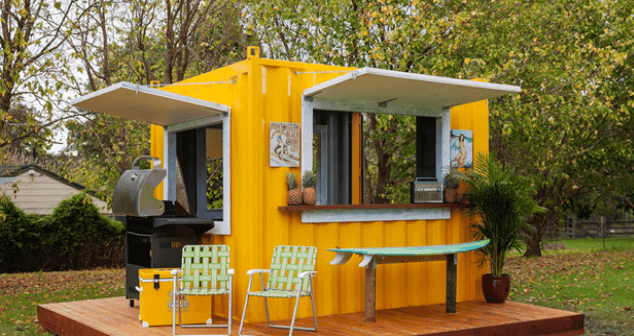 (Picture: Wisley Green)
(Picture: Wisley Green)
Mobile service workshops
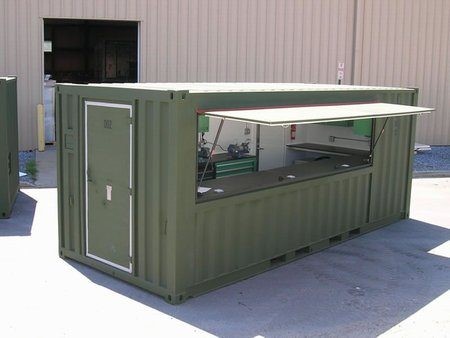 (Picture: Marine in sight)
(Picture: Marine in sight)
Diners – Restaurants

Makeshift schools
 (Picture: Samsung)
(Picture: Samsung)
Hospital (Emergency Care)
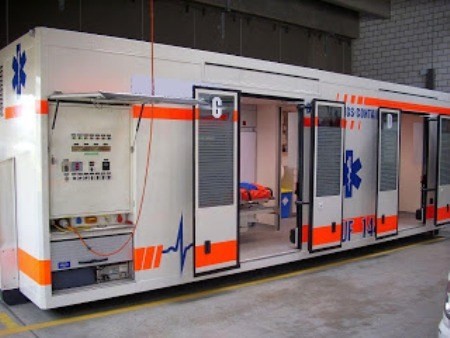 (Picture: Cuboide.cc)
(Picture: Cuboide.cc)
Swimming Pools
Storage units
Public restrooms
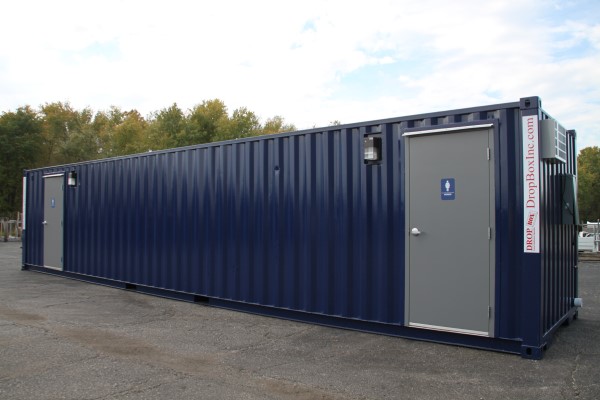
(Picture: DropxBoxInc.com)
You can find garages, barns, saunas, and even bridges (see below) made out of containers. This proves their versatility and shows that there are still a lot more possibilities and other uses for retired maritime containers that it is impossible to describe them all in just a few words or pages.
 (Picture: Quora)
(Picture: Quora)
At Bulk-Flow, we contribute to the ISO maritime container sustainability by making liners to improve the producers’ transportation of their bulk products.

Join the discussion, share your ideas and your experiences!
Tweet #reuse #shipping #containers with more ideas to recycle






